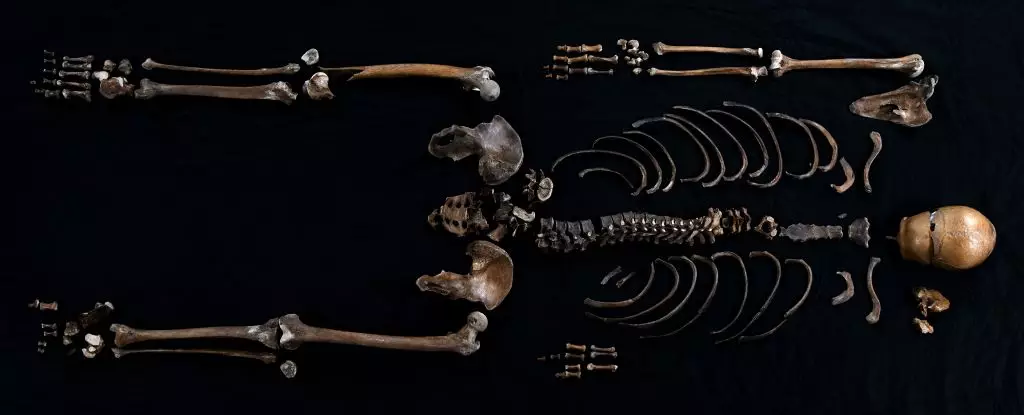In the labyrinthine depths of Norway’s medieval history, a single line from the Sverris Saga has evolved from a mere anecdote into a profound revelation about our past. The saga recounts an event in 1197 CE, where a corpse was thrown into a well, presumably to taint the water. This seemingly inconsequential act of war now carries weight, as scientific endeavors have unearthed the bones of the ‘Well Man’ at Sverresborg Castle. Researchers from Scandinavia, Iceland, and Ireland have built a bridge between literature and tangible evidence, providing insights that were previously inaccessible. The discovery illustrates how historical texts can be reinterpreted and validated when combined with modern scientific techniques.
Originally found back in 1938, the remains of the Well Man languished in obscurity until curiosity and advanced scientific methodologies reignited interest in them. Led by genomicist Martin Ellegaard from the Norwegian University of Science and Technology, a team delved into the bones, applying cutting-edge techniques like radiocarbon dating, gene sequencing, and isotope analysis. With these advancements, the fragmented history surrounding the Well Man has begun to take a more coherent shape. Radiocarbon dating revealed that the individual lived approximately 900 years ago—aligning perfectly with the timeline of the conflict depicted in the Sverris Saga.
Through genomic analysis, the researchers constructed a profile of the Well Man, discovering that he likely had blond or light brown hair and piercing blue eyes. Yet, the information unearthed reaches beyond physical appearance. By utilizing a rich genetic database of modern Norwegian genomes, the research team traced his origins to Vest-Agder, a region significantly distant from Trondheim. This points to an intricate social network in medieval Norway, where individuals traveled across vast distances, possibly for trade or military alliances.
Furthermore, isotope analysis provided a fascinating insight into the Well Man’s diet, which showed a strong reliance on seafood. By examining the carbon and nitrogen isotopes in his bones, scientists reported that he had likely been a coastal dweller, whose life revolved around maritime resources. This finding not only corroborates the physical data obtained from radiocarbon methods but also enriches our understanding of nutrition and lifestyle during the period. Despite these revelations, many questions remain unanswered: Who exactly was this man? How did he meet his demise?
Contextualizing the Conflict: A Political Landscape
To appreciate the full impact of the Well Man’s discovery, one must also understand the context of the conflict he was part of. The siege of Sverresborg Castle by the Baglers—a faction opposed to King Sverre Sigurdsson—was marked by intrigue and bloodshed. The saga’s account describes a surprise attack that left the castle and its assets in ruins. Notably, it suggests that local inhabitants suffered collateral damage in what was ultimately a power struggle. The violence may not have been entirely one-sided, as evidenced by the potential that the Well Man could have been a victim of the embroiled factions. Archaeologist Anna Petersén asserts that the complexities of historical narratives often challenge the straightforward tales recounted in sagas, indicating that this event may have woven a tapestry of both combat and civilian suffering.
The research surrounding the Well Man encapsulates the importance of interdisciplinary approaches in historical studies. It stands as a testament to how the marriage of historical texts and modern science can reclaim forgotten narratives. As genomic databases continue to expand, the potential for uncovering more profound historical truths increases dramatically. Each analysis contributes to a collective understanding of human experience, particularly in contexts where records are scarce or evanescent.
The tale of the Well Man exemplifies the evolving nature of historical scholarship, urging us to challenge preconceived notions about our past. As further studies unfold, the rewriting of history, bolstered by scientific validation, offers a dynamic lens through which we can view the lives of individuals once lost to time. The skeletal remains of one long-forgotten man not only illuminate his own life but also speak volumes about broader societal structures and relationships of medieval Norway. In an increasingly fragmented digital world, such discoveries serve as critical reminders of our shared humanity, allowing us to connect with those who lived long before us.

Leave a Reply